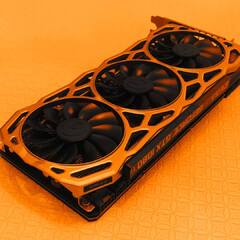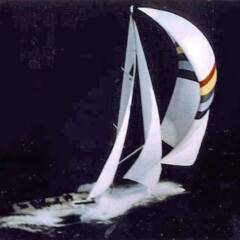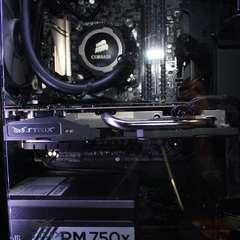-
Posts
1,105 -
Joined
-
Last visited
Awards
This user doesn't have any awards
About OfficialTechSpace
- Birthday October 28
Contact Methods
-
Discord
{Dylan} #6357
-
Steam
OfficialTechSpace
-
Twitch.tv
OfficialTechSpace
-
Twitter
TechSpaceHQ
- Website URL
Profile Information
-
Gender
Male
-
Location
British Columbia, Canada
-
Occupation
Professional tech enthusiast
System
-
CPU
Ryzen 5 5600X
-
Motherboard
MSI Gaming Pro Carbon X470
-
RAM
G.SKILL Ripjaws V DDR4-3600 CL16 (2x8GB)
-
GPU
EVGA RTX 3070 Ti FTW3 Ultra
-
Case
MESHMOD v1.0 / Deepcool Matrexx 70 ADD-RGB 3F
-
Storage
240GB G.SKILL Phoenix FTL SSD, 1TB Crucial MX500 SSD, 2TB Toshiba HDD, 4TB Seagate HDD
-
PSU
EVGA 1000W 80+ Gold (210-GQ-1000-V1)
-
Display(s)
AOC 24G2 24" 1080p 144 Hz IPS
-
Cooling
EVGA CLC 280
-
Keyboard
Rosewill K81 / Kailh Brown
-
Mouse
Logitech G502 Hero
-
Sound
Mackie MR524, Mackie MRS10, HiFiMan Ananda, Sennheiser HD6XX, Sennheiser HD58X, 7Hz Timeless, Moondrop Starfield, Blon BL-03, Tin Audio T2, KZ ZS10 Pro
-
Operating System
Windows 11 Home
-
Phone
Samsung Galaxy S21
- PCPartPicker URL
OfficialTechSpace's Achievements
-
A power amplifier is the correct term because I'm suggesting integrating a DAC to the setup. Speak when you have something useful to add, I'm not new to the audio space. The DAC feeds out to an amplifier, which then feeds to the speakers providing sufficient power. Pre-amp just refers to the process previous to the amplifier. A DAC still keeps volume control. It includes all of the required materials. All you need to do is assemble it, and that should take no more than a few hours. That's why it's a kit, it's everything. GR Research also has in-depth videos showing the entire build process. The work pays off, and as a result they're better designed than a number of much more expensive speakers. By opting for DIY and doing it properly, you avoid all of these issues often made by others: https://docs.google.com/document/d/1pwA92GsmGfpXTs45Zyc_u3YYIE9CfSM4MXRD89SoI2o/edit?usp=sharing
-
Proper speakers use RCA, XLR, and TRS connectors. Some other active models do include optical inputs, although these do not. 3.5mm line-outs are more commonly used on desktop speakers. Just a regular power amp, nothing too extravagant. Although I would recommend the GR Research X-LS Encore's above all else. I'm not sure why everyone seems to be talking about interfaces, the proper item is a DAC. Interfaces have integrated DACs, but are multi-purpose and thereby not ideal for an output-only situation. manufacturers have a set budget to work with, and a target market price. You want something that is single-purpose, so that you know the entire development was focused on having a clean output rather than balanced between many things. Sharing = lesser quality. Less sharing = better.
-
Yamaha has been out of the game for at least half of a decade, if not more. They're not competitive in this day and age when it comes to studio monitors. Same grouping as KRK in my mind. They found a sound/design, and they haven't updated it in many years. Get an Emotiva B1+, Mackie MR524, or try DIY and go for the X-LS Encore's from GR Research. They all sit at about the same price, although DIY obviously gets the best results. You can just pay for the kit, then assemble it yourself. That's the trick to getting an awesome system for super cheap. Or you could buy them pre-assembled, which is obviously WAY more expensive when you factor in the labor with that quality of components.
-
It certainly is, so you are right about that. It just doesn't look good on whomever ignores it. That's like admitting you're wrong, and allowing the other to win. If the other is wrong and you believe something that they're saying could wrongfully influence the OP, it makes perfect sense to correct them. That way it's publicly known by all parties that the others information should be disregarded for the better of attaining an appropriate result.
-
Everything other than measurements is subjective, and technical performance is equally as important to discuss as the measurements themself. Most audiophiles would rather be told about the detail, resolving ability, imaging, soundstage, timbre, candor, and dynamics of a speaker. As opposed to being told of course, that they're a little bright. The measurements already told us that. Plus, they're Klipsch speakers... with a horn... so there's no surprise there in that regard. Moe doesn't even understand time-arrival/phase issues, which are objective in themselves. A "reviewer" that listens in mono, provides some measurements, and doesn't even entirely understand the objective faults in a design is not a valuable asset. If subjective impressions aren't part of the "review", then it's simply not a review. It's a brief overview.
-
The same electrical engineer that recently insisted a time-arrival/phase issue could be resolved with EQ? That's what he said in his "review" of the GR Research RP600M upgrade kit. I put "review" in quotations because they aren't actually reviews. Amir (whom I will now refer to as Moe, because that's funny) takes one speaker, playing in mono, measures it... and then that's it. He doesn't even listen to them as part of the "review" process, nor could he. He doesn't even have the other speaker. https://youtu.be/Gu7U_7JSAzg
-

Recommended Audio Interface for sm7b, krk 5 g4, hd800s
OfficialTechSpace replied to Azra's topic in Audio
You shouldn't be running everything off of the same source, they're all designed for their own purposes. An audio interface should be used for a mic exclusively. For speakers and headphones, a dedicated DAC/Amp (if applicable) is preferable. The difference in audible quality is very obvious, because it has one purpose to focus on. It doesn't have to be many things at once. The Scarlett would be perfectly fine for the mic, I use one personally. I'd recommend getting something to the effect of a sub-$200 THX amp for the headphones, and a DAC sporting an AK4493 chip or better to match in quality. I use an SMSL SP200 THX-888 amp, paired with an SMSL Sanskrit 10th MKII DAC. THX made a big splash in the amp industry a few years ago, and were pretty much the go-to amps on a reasonable budget. They've since come down even more in price, and remain a solid option. Also, the $3000 Benchmark amp uses the same THX chip as the SP200. -
Danny has worked in partner with manufacturers to create his own drivers, all to his own specifications/standards. He then uses these drivers in a number of applications, including his own speaker systems that he sells and makes a living off of. Systems range from as little as $200 to $4K and above, which custom and sometimes open-baffle cabinets are designed for. They're also sold individually/separately for anyone who'd prefer that. Danny designs his own crossovers using only the most quality components (at a reasonable price), and sells kits that completely rework existing speaker designs by other companies. Get that? His side-business is fixing the mistakes made by other companies. Kits also include new connectors, and a sheet of NO REZ to retreat the cabinets. He's been in the audio industry for decades, and GR Research has been a standalone business for that time. If someone who designs their own drivers, cabinets, and crossovers isn't an engineer... then I don't know what is. The problem with that though, is that I do. Meaning we should be pointing elsewhere for your source of confusion. ASR on the other hand, does not design their own products. They actually have a clear lack of understanding when it comes to doing so as well. When given the opportunity to show their strengths whilst reviewing a DIY speaker kit... they didn't even treat the cabinet... they left it raw, and then measured it wrong with averages taken from multiple different positions. The people at ASR are not engineers, they are glorified enthusiasts with measurement hardware they're incapable of competently making use of when it comes to speakers. ASR also tried to disprove the existence/impact of EMI by running an unplugged power cable next to an audio cable (which is hilariously stupid). Or maybe it's people like you who don't know any better. You'll have the right to go against an honest audio engineer when you own/operate your own business, and are able to competently match or surpass the performance of others. However, as it stands you do not. Speak on what you know, not what you don't. Leave audio to the professionals, and become less of an opinionated barrier for progression in the industry. There are too many of you, you're just another parrot... another copy of a copy. *insert nine in nails* Lol.
-

I want to add center channel speaker, don't device to buy
OfficialTechSpace replied to Goldilock's topic in Audio
Unless your audio is failing to be downmixed / recognized as stereo (it shouldn't) there should be absolutely no problem regarding the clarity of speech on movies and TV. A center channel provides all of the exact information, only in mono. It's the sum of both left and right channels together. I'd point to the source. -

mackie MR524 vs Jamo S 803 which speakers are better
OfficialTechSpace replied to LAYTOR's topic in Audio
Nope. Bookshelf is just a term, and is not relative to the quality of product. Jamo in particular usually spaces their drivers too far apart. This results in phase issues, gaps in the response, and poor off-axis performance. Studio monitor is a similar term, although commonly meaning the tonality is more accurate. Bookshelf speakers on the other hand can have coloration, which objectively speaking is not good. If one wants a warm sound, they should get into tubes. Not begin investing in lossy speaker cabinets. Second point to be aware of is shady marketing. The surround-sound gimmick being promoted by the Jamo's is a bad sign from the beginning. It's about as meaningless as slapping a 'Hi-Res' sticker on something, there's no universal standard for such a measurement. Thereby no qualification process. When that sort of thing is being pushed front-and-center, that's usually a sign of a bad product trying to piggy-back its sales on marketing hype. -
For a grand, a soundbar should be completely out of the equation. An acoustically inept design is not a good base. Get some tower speakers, and an amplifier. JBL Studio 570's or 580's would probably be suiting due to you father-in-laws familiarity with the JBL house-sound.
-

speakers Good speakers for desktop in the $150-$250 range?
OfficialTechSpace replied to ECMalcolm's topic in Audio
That's an utterly poor reading of my reply, I think I was very clearly taking opposition to the recommendation. Stating "if ___" to the point of spending an obscene amount of money on the CS5's. Actually stating that even $250 on the CS5's and an amp was "meh". Also, completely reworking the crossover for a three-way bookshelf speaker using high-quality components, and retreating the entire cabinet with NO REZ definitely has a massive impact on sound. It also changes the CS5's from a woofer>tweeter>supertweeter system, to a woofer>midrange>tweeter system. Anyone who says otherwise or suggests that it wouldn't even be worth it on super-expensive variants should give up audio as a hobby. Everyone's entitled to their own opinion, although when it's wrong there should be an ability to flag it as inaccurate. Much like Trump had on his tweets before he was banned. -
Well, it doesn't necessarily have to be anything too spectacular. I'd recommend a THX offering in the sub-$200 range. Think, THX AAA ONE from Drop, or SMSL SP200 THX-888. For a DAC, you start to hit diminishing returns at $150 these days. Something to the effect of an SMSL Sanskrit 10th MKII would be sufficient. That kind of DAC/Amp combo would leave you plenty of headroom for many years to come.
-
We've had this discussion on the forum before. Objectively speaking, the HD600 is the best measuring and most accurate out of the three. Subjectively, the HD600 also has the best imaging, though only by a slim margin. All of them are pretty dark, and still use 20+ year old drivers. HD660S is the worst of the three, and a muffled mess by comparison. HD6XX is just a rebranded HD650, and that sits center stack.

.png.1f5d1464b47af587c75134bd48c9618f.png)







